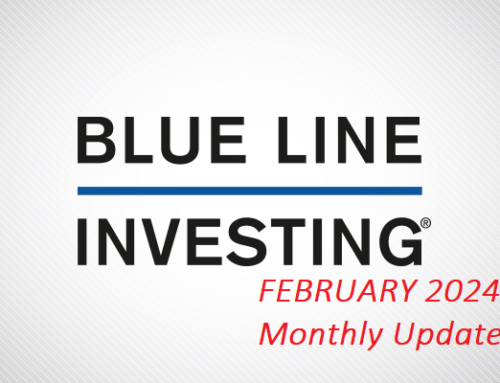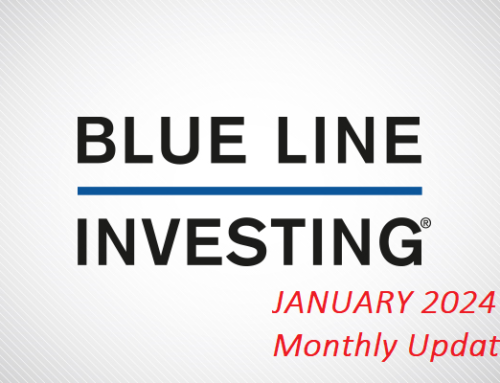Stock market trends are like a rollercoaster. The ride up begins slow and steady, rising higher and higher until the peak. But after the peak the ride turns down with a decline that can be fast and furious. The US Stock market continues to press higher and higher destined for a peak that lies somewhere in the future. So what should investors expect after the peak? Can history be a guide? We believe the answer is yes and will use the Japanese Nikkei 225 Index (Nikkei²) for illustration.
According to the late Richard Russell, author of Dow Theory Letters, when a stock market trend finally peaks the resulting decline retraces one-third to two-thirds’ of the prior advance – and in short order. The Nikkei began the early 1970’s trading around the mid-2,000 price level. Over the next 20 years it progressed on its upward journey and experienced a few price corrections along the way. In 1989 it finally peaked just shy of 39,000. Referring to the chart below, think of the Nikkei as the rollercoaster and the Blue Line as the track. During the rising phase (highlighted by the rising green arrow) the rollercoaster tends to remain on top of the Blue Line.

But after the peak, the rollercoaster drops below the Blue Line – and sometimes in spectacular fashion. Referring to the chart below, the rollercoaster will tend to remain below the Blue Line until the negative trend (illustrated by the declining red arrow) is exhausted and all selling subsides.

So, what are the lessons from this? First, by the end of 1992, most buy-and-hold investors who bought into the Nikkei after 1986 lost money. That’s six years of lost money, lost time, and lost opportunity if they didn’t recognize the change in trend and take proactive action.
Second, for 20 years the Nikkei enjoyed a rising trend, culminating in a cumulative return of over 1,500%. But after it peaked it lost over 56% of the preceding gain – within the next 3 years! Think about that – In just 3 short years over half of the gains accrued over 20 years were eliminated!
We believe historical examples such as the Nikkei illustrate the need for investors to utilize a sell process. Will history repeat when the current US Stock market rally peaks? We believe so, but maybe not in exactly the same way. If you do not have your own sell process and would like to learn more about ours, please visit www.BlueLineInvesting.com/process.
Jeff Link
Disclaimers:
¹ Blue Line Investing (BLI) is an alternative to traditional wealth management. BLI uses a disciplined, rules-based investment process to seek investment opportunities, regardless of whether financial markets are rising or falling. Based on technical analysis research, the process applies trend-following using specific Exponential Moving Averages (EMAs) of the market along with other technical indicators. A moving average is a widely used indicator in technical analysis that helps smooth out past price action by filtering out the “noise” from random price fluctuations. EMA’s can be calculated for any time period. Some examples include the 5 day EMA; 50 day EMA; and 150 day EMA. We have attempted to simplify this by calling the various EMAs we use in our process the “Blue”, “Purple” and “Green” lines.
² The Nikkei 225 is a stock market index for the Tokyo Stock Exchange (TSE). It is a price-weighted index, operating in the Japanese Yen, and its components are reviewed once a year. Currently, the Nikkei is the most widely quoted average of Japanese equities, similar to the Dow Jones Industrial Average. The volatility (beta) of an account may be more or less than an index. It is not possible to invest directly in an index.
Technical analysis is a method of evaluating securities by analyzing statistics generated by market activity, such as past prices and volumes. Technical analysis attempts to predict a future stock price or direction based on market trends. The assumption is that the market follows discernible patterns and if these patterns can be identified then a prediction can be made. The risk is that markets may not always follow patterns. There are certain limitations to technical analysis research, such as the calculation results being impacted by changes in security price during periods of market volatility. Technical analysis is one of many indicators that may be used to analyze market data for investing purposes and should not be considered a guaranteed prediction of market activity. The opinions expressed are those of Blue Line Investing. The opinions referenced are as of the date of publication and are subject to change without notice. Blue Line Investing reserves the right to modify its current investment strategies based on changing market dynamics or client needs.
Past performance is not indicative of future results. This material is not financial advice or an offer to sell any product. The information contained herein should not be considered a recommendation to purchase or sell any particular security. This information is intended for educational purposes only and should not be considered financial advice. It should not be assumed that the investment recommendations or decisions we make in the future will be profitable or will equal the investment performance of the securities discussed herein.
Advisory services offered through Gordon Asset Management, LLC (GAM). GAM is an SEC-registered investment adviser. Registration does not imply a certain level or skill or training. More information about the advisor, its investment strategies and objectives, is included in the firm’s Form ADV Part 2, which can be obtained, at no charge, by calling (866) 216-1920. The principle office of Gordon Asset Management, LLC is located at 1007 Slater Road, Suite 200, Durham, North Carolina, 27703.




